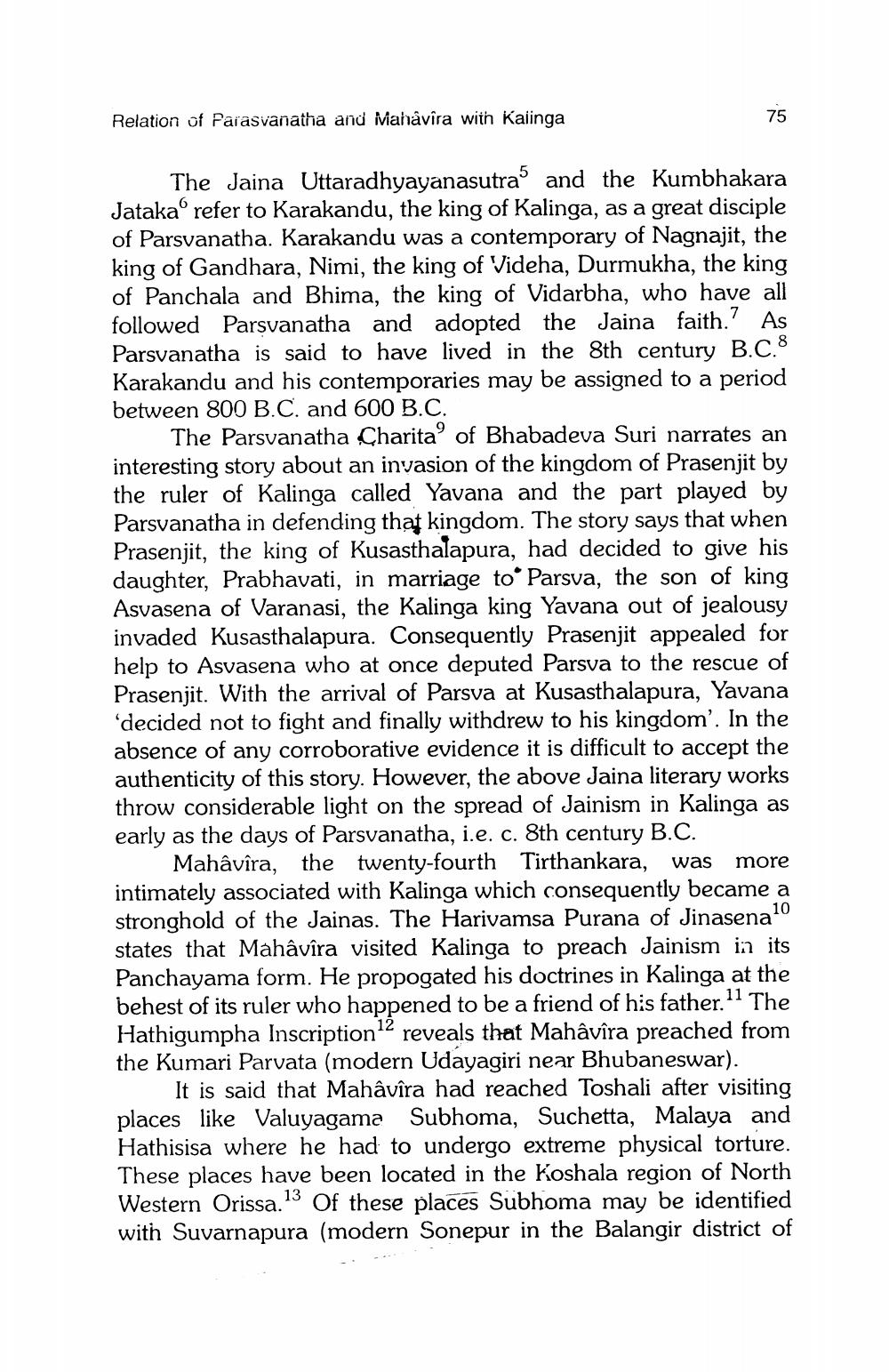________________
Relation of Parasvanatha and Mahavira with Kalinga
The Jaina Uttaradhyayanasutra' and the Kumbhakara Jatakao refer to Karakandu, the king of Kalinga, as a great disciple of Parsvanatha. Karakandu was a contemporary of Nagnajit, the king of Gandhara, Nimi, the king of Videha, Durmukha, the king of Panchala and Bhima, the king of Vidarbha, who have all followed Parsvanatha and adopted the Jaina faith.? As Parsvanatha is said to have lived in the 8th century B.C.8 Karakandu and his contemporaries may be assigned to a period between 800 B.C. and 600 B.C.
The Parsvanatha Charita' of Bhabadeva Suri narrates an interesting story about an invasion of the kingdom of Prasenjit by the ruler of Kalinga called Yavana and the part played by Parsvanatha in defending that kingdom. The story says that when Prasenjit, the king of Kusasthalapura, had decided to give his daughter, Prabhavati, in marriage to Parsva, the son of king Asvasena of Varanasi, the Kalinga king Yavana out of jealousy invaded Kusasthalapura. Consequently Prasenjit appealed for help to Asvasena who at once deputed Parsva to the rescue of Prasenjit. With the arrival of Parsva at Kusasthalapura, Yavana 'decided not to fight and finally withdrew to his kingdom'. In the absence of any corroborative evidence it is difficult to accept the authenticity of this story. However, the above Jaina literary works throw considerable light on the spread of Jainism in Kalinga as early as the days of Parsvanatha, i.e. c. 8th century B.C.
Mahâvîra, the twenty-fourth Tirthankara, was more intimately associated with Kalinga which consequently became a stronghold of the Jainas. The Harivamsa Purana of Jinasenało states that Mahâvîra visited Kalinga to preach Jainism in its Panchayama form. He propogated his doctrines in Kalinga at the behest of its ruler who happened to be a friend of his father." The Hathigumpha Inscription12 reveals that Mahâvîra preached from the Kumari Parvata (modern Udayagiri near Bhubaneswar).
It is said that Mahâvîra had reached Toshali after visiting places like Valuyagama Subhoma, Suchetta, Malaya and Hathisisa where he had to undergo extreme physical torture. These places have been located in the Koshala region of North Western Orissa. 13 Of these places Subhoma may be identified with Suvarnapura (modern Sonepur in the Balangir district of




